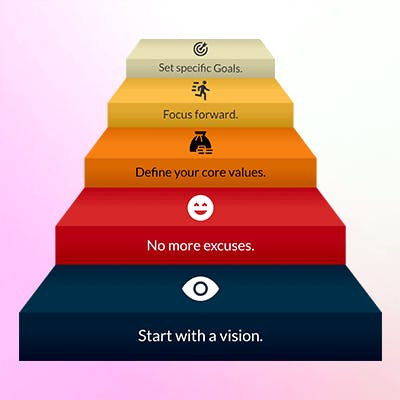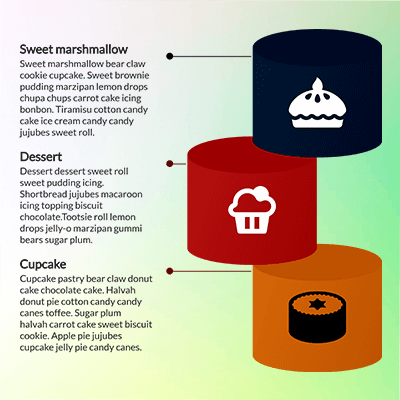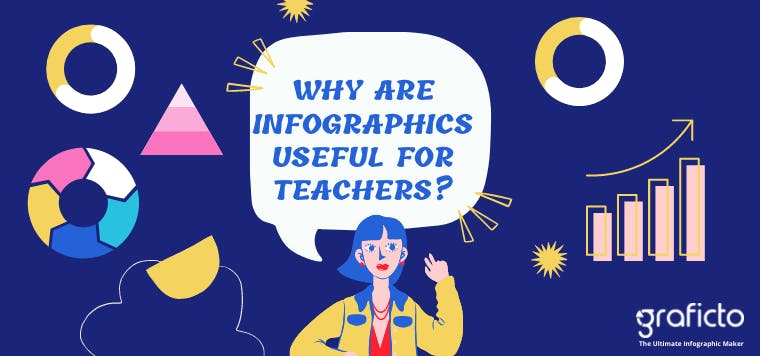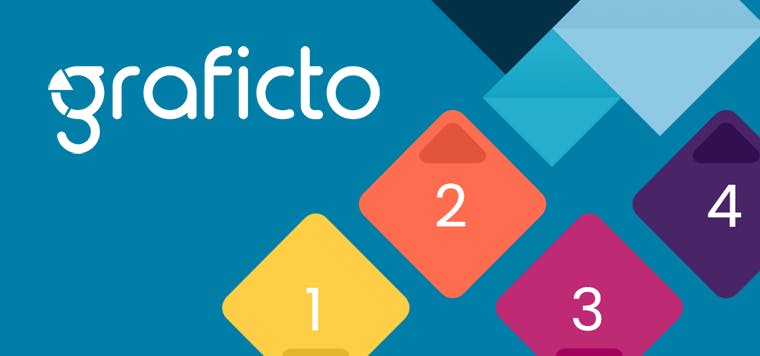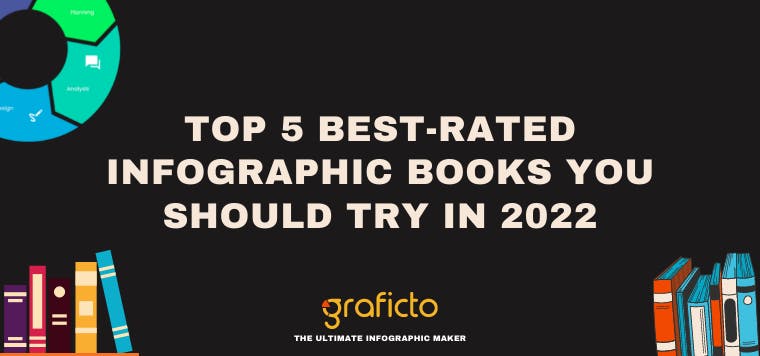Infographics can be defined as a mechanism of representing information, knowledge or any form of data visually. In another way, infographics project the information to its audience via charts, diagrams, illustrations or graphics. As teachers are playing a vital role in transmitting correct information properly to the students with different capacity of understanding and reading skills, infographics can be introduced as an ideal tool or teaching strategy which mitigate their several issues and advance the standard of teaching. These are the major benefits that a teacher can enjoy using infographics as a teaching method.
- Make the communication more accurate for all the students.
The ultimate purpose of teaching is to communicate the new knowledge successfully to the students. It is obvious that within a classroom there is always a range of students with diverse IQ level, reading and understanding level. Hence, infographic data presentation can be recognized as the best substitute for lengthy phrases or verbal explanations, even for the students who are weak in reading, writing, understanding and also for those who are low in IQ level. With an infographic, even if you don't read a single word of text on it, you can still easily understand what's being presented. Infographics are so effective because they help us to digest complex sets of data quickly and also present ideas in ways that are easy to understand for audiences who might not be familiar with the subject matter being discussed. A good lesson usually consists of two parts: verbal and visual. A combination of each is always better than focusing solely on one. - A Mechanism for retaining students’ attention to the lesson.
Infographics itself succeed in attracting as well as retaining students' attention to lessons. It is a universal truth that colorful pictures and diagrams are more catchy than a paragraph only with text. So teachers using Infographics is an effortless tactic to retain the students attention to the lesson. As any teacher knows, getting students to work together can be challenging. Chances are, you’ve tried at least one activity that involved groups. But did it seem like a lot of your students weren’t on board? Well, infographics are perfect for group projects because they require different people in your class to work together in order to produce an end result. - Increase students' interaction and engagement with inquiry-based learning.
There are times in every teacher’s classroom when students begin to lose focus. In these moments, visual learning can be a huge asset and help keep students engaged and interested in what is being taught. Presentations that incorporate charts, diagrams, graphs, or infographics can keep students focused on a lesson. For example, if you were trying to teach your students about five unique kinds of trees that grow in your state and each tree was visually represented by an infographic, students would be able to see what each kind of tree looks like and would also understand how big or small each kind of tree is compared to others. Each piece of information would come through clearer because it is being presented visually rather than just verbally. - Ability to present a lot of information in one interface.
Infographics itself comprises a large amount of information to one interface hence it can be defined as a mode of organizing large scales of diverse information systematically composed in a simple and more creative one layout. Moreover, it can be difficult to comprehend data without seeing it visually, which is why charts and graphs make so much sense. When you have a lot of numbers or percentages to share, using charts and graphics will help your audience digest information in an easier manner to understand. For example, a pie chart might help your class understand that 50% of district funding comes from local sources while 25% comes from federal sources. If your school doesn't have an IT department or access to professional software, consider trying Graficto instead for easy creation of chart diagrams and all the other infographics. It’s free and caters your requirements very well. This online tool provides customizable templates for many types of charts including line, bar and pie. Plus, sharing the created infographics with the students via email or using other modes of social networks make daily tasks easy and convenient. - Good mechanism to approach differently-abled and children with special needs.
If you teach students with special needs, or if you want to help your students learn new information in a different way, one of your best options is to create an infographic. An infographic may include text and images that explain a concept, but it also has two other key components, color and layout. Using these tools can help your students grasp difficult topics like geography or historical events much more easily. So, if you teach students with special needs, or if you want to help your students learn new information in a different way, one of your best options is to create an infographic. - Visualization makes information easier to understand.
The human brain is wired to think in pictures, not words. As per David J. Linden, Ph.D., author of The Accidental Mind: How Brain Evolution Has Given Us Love, Memory, Dreams and God , we’re capable of processing visual information 60,000 times faster than text based information and can comprehend it more accurately. Visual learning is also far more memorable and can help solidify concepts in your classroom. Data visualization has been growing at an exponential rate over the past decade as it helps those who aren't good with numbers understand financial trends by providing data via graphs instead of raw statistics; these techniques have helped increase user engagement rates among companies like Apple, Nike, Facebook, Google etc. - Putting text into images makes it easier to memorize.
When an idea is presented to us, we tend to remember it as a whole. For example, when we read about climate change, we’re more likely to remember that humans are responsible for climate change than all of its causes combined. Putting text into images makes it easier to memorize because you can fit more information onto a page. Just like with a textbook, you can store that entire package as one sheet and thereby can memorize one whole concept in your mind. With text and images together, you’re able to break down concepts into their most basic parts before storing them in long-term memory where they can be retrieved later in life. Likewise, infographics help students to understand the topics better. Not only do students remember infographics better than regular text and pictures, but they also find them entertaining and fun to read. - Infographics inspire creativity in students.
By using infographics in your lessons, you encourage students to think outside of their normal ways of thinking. They are often so used to listening, reading and writing that adding visual materials encourages them to think visually. Whether it is pie charts, graphs or images, these visual materials may give students a better grasp on concepts. Have you ever tried handing out worksheets only to find that half of them were drawn on? Handing out practice worksheets or test questions can be boring for some students, but try getting one done by drawing on it and now all of a sudden it becomes fun. At first glance infographics look much like other graphic illustrations like cartoons and comics which appeal to young audiences change the way they look at anything in their life which tend to be complex, in a more creative and innovative approach.
Now that you have the answer to why are Infographics useful for teachers. we’re sure you’re feeling pumped up to create an engaging infographic that your audience or students loves.
Stuck with creating your infographic design? Sign up for Graficto infographics maker for free and create visually engaging infographics in just seconds using ready-made templates, built-in icons and fonts, colors and more.
